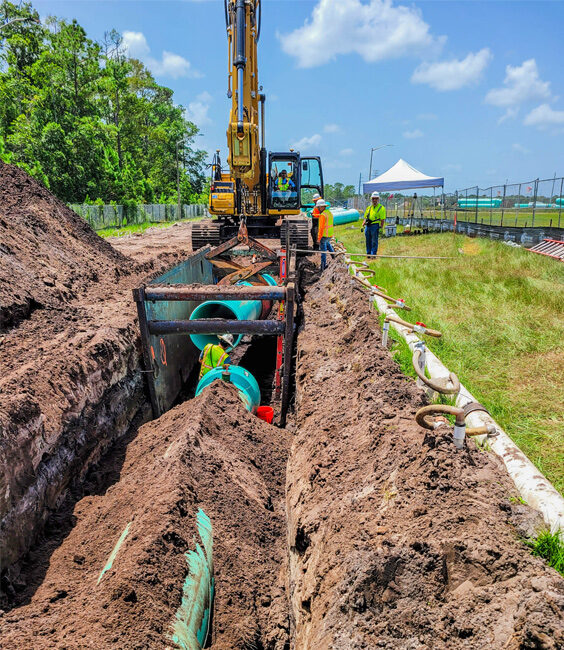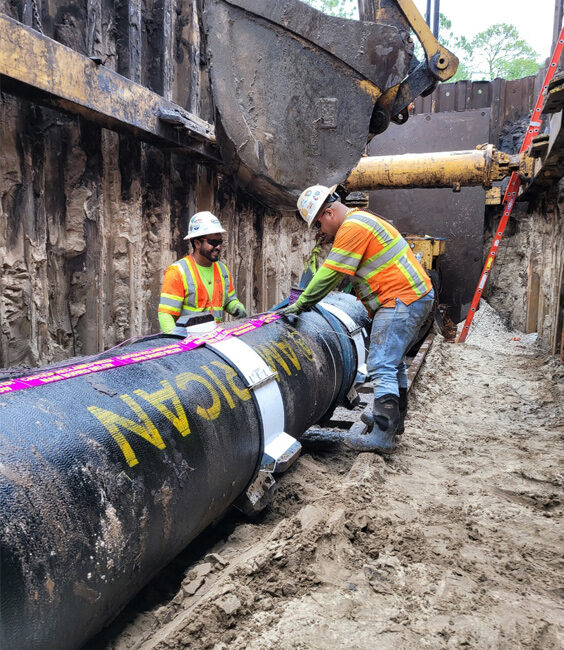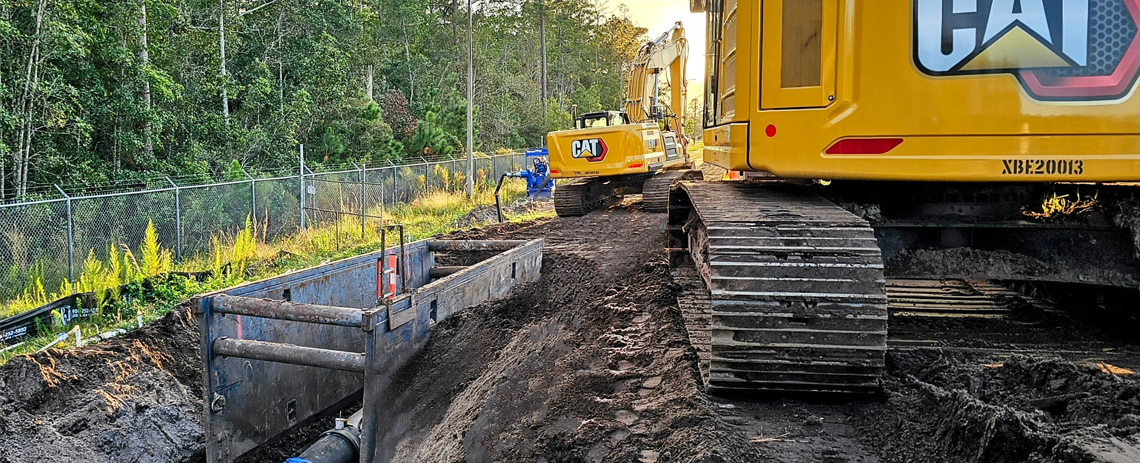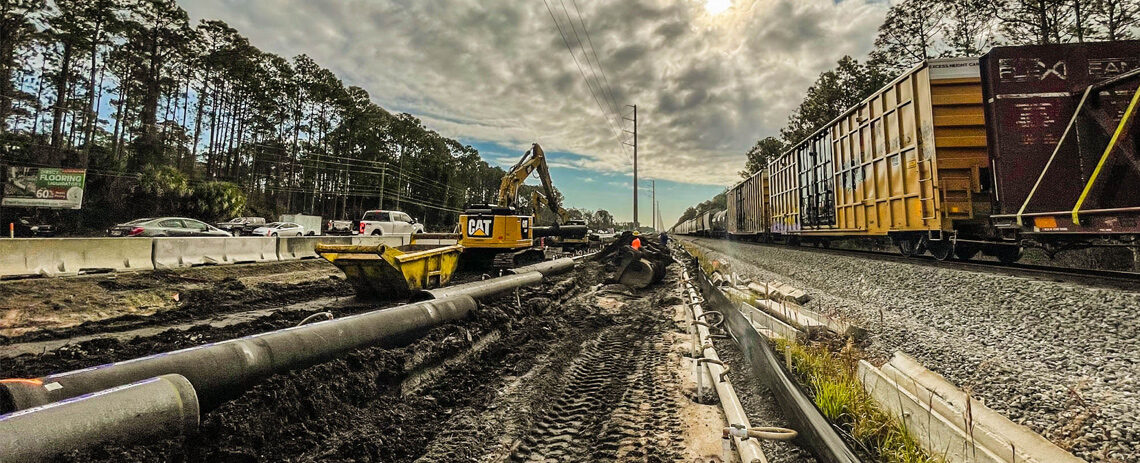Greenland WRF Pipelines: Water, Reclaimed Water, and Sanitary Sewer Force Mains
Location
Jacksonville, FLValue
$62MDelivery Method
- Progressive Design-Build
Client Type
MunicipalProject Type
Pipeline
The Greenland Water Reclamation Facility (WRF) Pipelines project responded to the growing population in south St. Johns County, Florida. Recognizing the need for enhanced wastewater and reclaimed water management at the facility, JEA commissioned Garney as the design-builder. Garney’s role focused on implementing an efficient pipeline system to facilitate the transfer of wastewater and reclaimed water to and from the Greenland WRF site.
The project scope included installing 14.5 miles of ductile iron pipelines, 36-inch PVC sanitary force mains, and high-density polyethylene (HDPE) waterlines of varying diameters. These pipelines were strategically routed along existing JEA transmission lines, the Florida Department of Transportation (FDOT) easements, and the Florida East Coast Railroad (FEC) easements to optimize efficiency and minimize community disruption. The team coordinated in and around the FDOT right-of-way in Duval and St. Johns counties and the FEC. Garney used over 20,200 linear feet (LF) of horizontal directional drilling (HDD) for precise installation under roads and wetland areas, ensuring minimal environmental impact and maintaining operational integrity.
The project corridor was heavily congested with existing utilities, prompting Garney to conduct utility exploration during preconstruction to identify utility locations and confirm the feasibility of the pipeline route. This approach proved valuable during construction by reducing the risk of encountering unknown utilities or unexpected site conditions. It allowed the team to use labor and equipment more efficiently, minimizing potential downtime and production losses associated with unforeseen challenges. The exploration allowed the team to operate labor and equipment more efficiently, minimizing potential downtime and production losses associated with unforeseen challenges. Beyond existing utilities challenges, the installation was located near a high-voltage overhead electrical easement. Garney also coordinated security and access with JEA’s water plant and energy center.
This project bolstered wastewater and reclaimed water management, supporting sustainable development and ensuring the region’s infrastructure can accommodate future growth.



